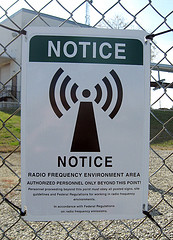
Wireless-G has been the established standard for the last few years. We remember when we started playing with Wireless-B. It was only recently we jumped to Wireless-N. We didn’t need the speed jump.
With the increasing crowding of wireless spectrum, gigabit wired networks, where possible, are probably a good move.
We jumped this past month to dual band Wireless-N because of of the 5GHz frequency it offered. Wi-fi usually operates at 2.4GHz, but N supports two different frequency ranges.
Very few devices take advantage of the 5GHz band, which means that there will be little interference. Living in a city, there are at least 16 2.4GHz wireless networks in range of our test device.
Dual Band routers offer antennas for both frequencies, which means that you can have the devices that do not support 5GHz still operate.
After much consideration, we overbuilt and purchased the WNDR4500 when it was on sale.
[asa]B005KG44V0[/asa]
The router offers speed and reliability for the price, as well as multiple simultaneous full speed connections, guest networking, file sharing, and more. We needed the extra speed after we upgraded to wideband. The router had to keep up with the increased throughput.
This isn’t a router review. It is the most expensive router we have ever purchased. But if house networking is important to you, your router should be too. And if you are concerned about interference from other access points, upgrading to the 5GHz band is a viable option.
[asa]B0036BJN12[/asa]
The cost of a new Intel wireless mini-pci card is not prohibitive either. Most of these cards are easily accessible on a laptop, making it a simple upgrade.
But what do you think? Is less interference worth it? Do you care about the possible 450mbps throughput? What would be your rationale for going with a high-end router?
Related articles
- Gigabit Wi-Fi chips emerge, will power super-fast home video streaming (arstechnica.com)

Wow 180$ for a router, I don’t know if I could part with that much money for a router